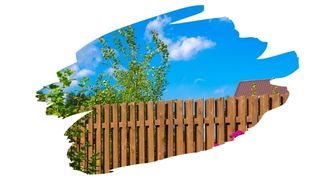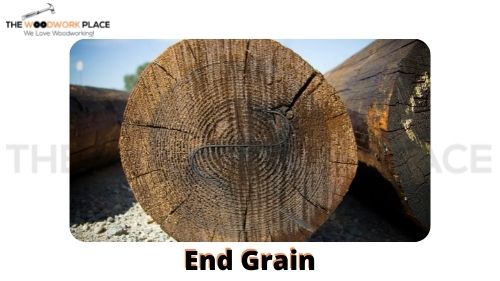Are your landscape timbers perfectly aligned? Or are they beginning to look bent out of shape?
If its the latter, then it’s not surprising.
When it comes to the great outdoors, water can manage to seep into wood, twisting it every which way. But, what can you do to prevent landscape timber from warping out of position?
Well, in this post, you will learn why wood sometimes contorts and bends in the first place. You will also discover why even treated timber isn’t immune to the effects of warping.
And we reveal exactly what you can do to stop landscape timbers from becoming misshaped…

This post may contain affiliate links to products that we receive a commission for (at no additional cost to you). Learn more here.
What Are Landscape Timbers Treated With?
Wood used for any kind of outdoor structure will have been specially treated to protect it from decay. This treatment involves infusing wood with chemical preservatives (referred to as pressure treatment).
Related Post: Should You Use Nails Or Screws For Pressure Treated Wood?
And sometimes, the wood may have been coated with wood preservatives instead (also known as surface treatment). Regardless, treated wood is much more rot-resistant, and far less likely to decay.
When it comes to landscape timber in particular, the wood is treated with either Alkaline Copper Quaternary Ammonium. Or, it can be preserved using Micronized Copper Azole.
And as a result of these treatments, (particularly in the case of micronized copper azole treated wood), landscape timber can appear a bit green.
Related Post: How To Dry Pressure Treated Wood (Quickly And Without Warping)
And Does Treated Landscape Timber Warp At All?
Well, the aim of wood treatment is to infuse wood with wood preservatives. These preservatives stop wood rot and decay. However, these preservatives do not waterproof wood.
So, water can still soak into wood, and cause it to warp, if that treated wood is left unsealed.
Wherever wood is, this remains true. Warping is always due to too much moisture, no matter what type of wood you’re using. Now, how the wood absorbs moisture varies (depending on where it is situated).
Indoors, water can splash back onto wood if it’s close to a water source like a sink in a bathroom. Whilst outside, water saturation is usually because of rain and dew.
But, What Causes Wood To Warp In The First Place?
Well, the problem stems down to the moisture in the soil (and the rainfall from up above). All of that water can make wood shift around.
You see, wood is ‘hygroscopic’, which is a formal way of saying that wood is super-absorbent. Hygroscopic materials are incredibly good at soaking up water from the environment around it. From moisture in the ground, to the humid vapor in the air, wood can soak it all up like a sponge.
Now, when wood soaks up water/moisture/vapor, wood expands. And, as the water evaporates, wood will dry out and shrink. All of that drying out will severely contract wood, causing timber to warp and crack.
But Isn’t Treated Wood Less Likely To Warp?
No, not at all. Treated landscape timber is less likely to rot, thanks to those wood preservatives. But, that’s their only job.
In some cases, treated wood may have also been infused with a water-resistant chemical coating. But generally, a wood preserving treatment does not waterproof wood. Which means treated wood is not able to repel water.
So, unsealed landscape timber is going to continue to absorb water unabated…unless you do something to seal that lumber.
So How Do You Stop Treated Wood Posts From Warping?
The key to prevent any wood from warping is to prevent water from getting into the grain. If water gets in, it will get absorbed by wood fibers…and that will cause those warping issues.
And, with landscape timber, the best way to seal them is to seal the end grain of each log.

Unsealed end grain have the most direct contact with the ground. And this is where most moisture in wood leeches from.
So, an end grain sealer will keep moisture in wood, reducing the chance of wood drying out and warping.
Related Post: Edge Grain vs Face Grain Cutting Boards (Which Is Which?)
And What Kind Of Sealer Should You Use To Seal Landscape Timber?
You must use an end grain sealing product, one that’s been designed to seal exposed grain.
An end grain sealer will place a complete and total waterproof stop on those exposed ends. And the best end grain sealing product for doing just that, is Anchorseals Log and Lumber End Grain Sealer.
Anchorseals end grain sealer has been formulated to stop wood from drying out via exposed ends. It’s an eco-friendly sealing product too, so it doesn’t contain chemicals that can harm your garden vegetables. Available in over 35 different colors, you are bound to find a tone that blends perfectly with your landscape.
You can find the latest prices for Anchorseals Log and Lumber End Grain Sealer over on Amazon.
Not all treated lumbers work for your backyard. Like railroad ties, for instance. Some people use these rail track supports as fences on ranches, because they last forever. But in this post, we dig into what really goes into treated wooden railroad ties, and if they’re safe for your garden: Railroad Ties Vs Pressure Treated Fence Posts: Which One’s Best For Your Garden?
To Wrap Up, Here Are The 3 Key Takeaways From This Post…
- 1). Warped landscape timbers are the result of wood absorbing moisture, and then drying out afterwards.
- 2). Treated landscape timbers have been infused with rot-resistant preservatives. But, these preservatives generally do not prevent warping.
- 3). To prevent warping, you will need to seal landscape timbers using an end grain sealer.
References:
Treated Wood In The Landscape | Home & Garden Information Center

